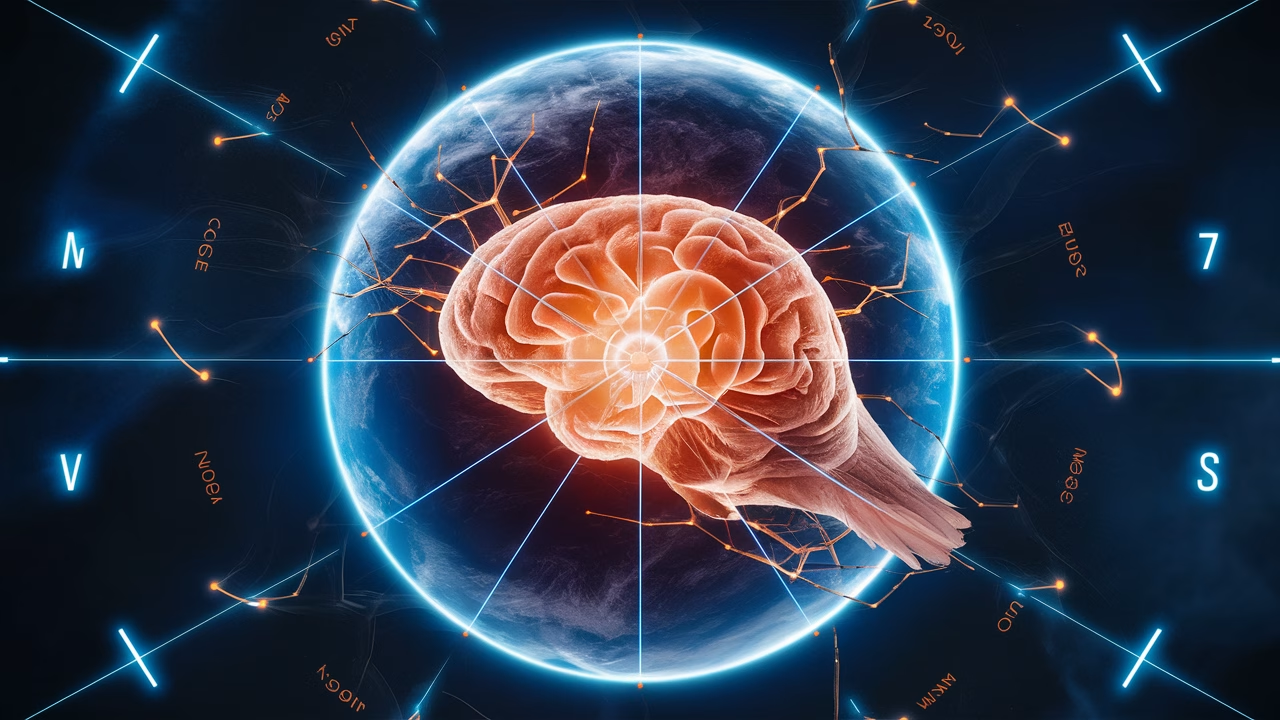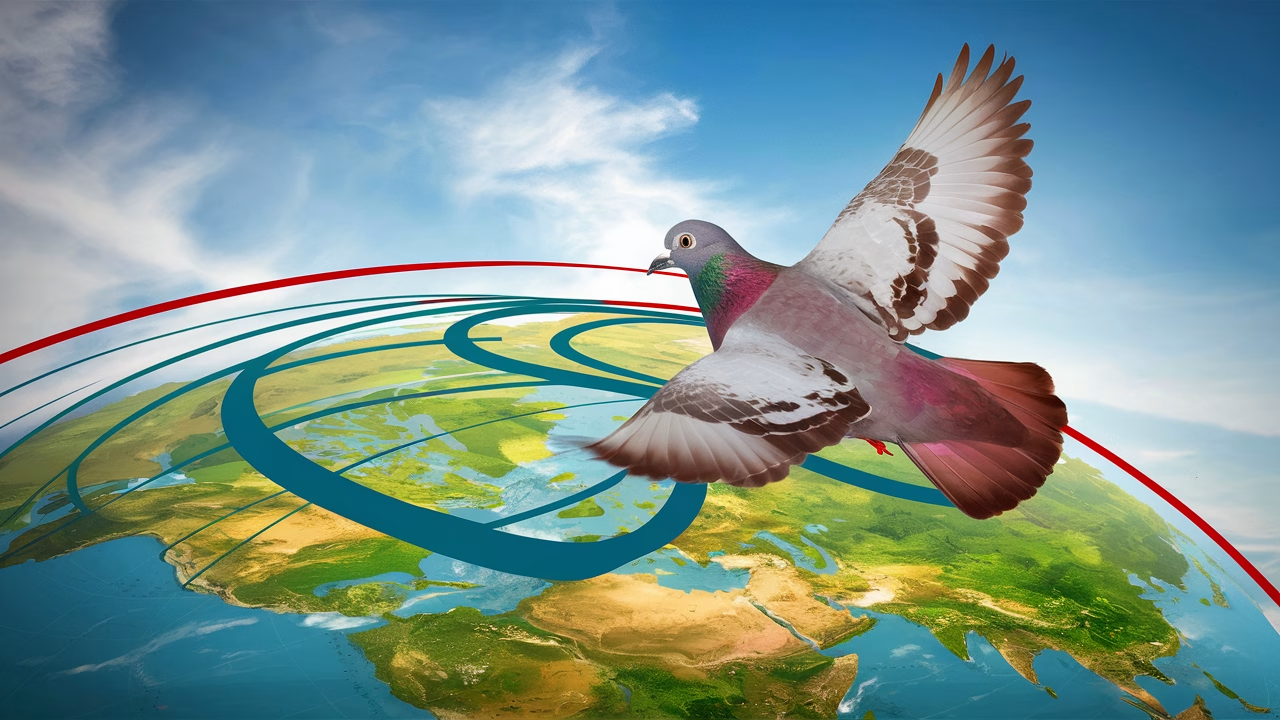Pigeons detect Earth’s magnetic field using specialized neurons in their brains that act like an internal GPS, allowing them to orient and navigate over long distances with extraordinary precision—even when visual landmarks are absent.
- Internal compass: Pigeons possess neurons in their brains that respond to Earth’s magnetic field, unlocking directional sense.
- Magnetoreception: This is the biological mechanism of detecting magnetic fields—central to avian navigation.
- Multiple cues at work: Pigeons use magnetic fields, sun position, and olfactory cues in complex combinations.
- Scientific interest: Studying pigeon navigation gives crucial insights into animal behavior and the neurology of migration.
Ever noticed that pigeons, whether in urban parks or countryside cliffs, have an impeccable sense of direction? Release one hundreds of kilometers away from its roost, and chances are, it will find its way home—like it’s reading invisible road signs in the sky. This uncanny ability has baffled scientists for centuries, but we now understand a critical part of the mystery: pigeons detect Earth’s magnetic field.
As researchers studying animal navigation, we’ve discovered how birds interpret their world differently than we do. For species like rock pigeons (Columba livia), their brains contain specialized neurons that function as an internal GPS, using environmental cues—including magnetic field detection—to determine their location and heading. This sophisticated navigation system isn’t just an evolutionary masterpiece—it’s a gateway to understanding animal behavior, migration patterns, and how Earth’s invisible forces shape life itself.
Today, let’s take a guided flight through the neurobiology, real-world behavior, and compelling science behind how pigeons and other birds navigate using Earth’s magnetic field with remarkable precision.
Understanding Earth’s Magnetic Field
Earth is wrapped by a magnetic field generated by its spinning iron core. This geomagnetic envelope not only shields life from cosmic radiation but provides a stable, planet-wide cue for navigation—especially over migratory scales that would challenge even our best technology.
Unlike humans who rely on GPS satellites or recognizable landmarks, pigeons navigate using Earth’s magnetic field by literally “feeling” magnetic north. But how does this work? Earth’s magnetic field varies subtly across the globe in both intensity and inclination, forming what scientists call a natural magnetic map.
Here’s an analogy: imagine traveling with a compass, but also seeing invisible contour lines in the sky indicating magnetic angles and strength. These shifts in the magnetic field are absorbed and decoded by birds’ brains, providing critical geographic information that doesn’t fade with time of day or weather conditions.
The Role of Neurons in Bird Brains
The heart of this magnetic marvel lies within specialized neurons in birds’ brains. Located in the upper beak and brainstem, these neurons are sensitive to magnetic field strength, polarity, and angle. This process, called magnetoreception, is essentially like having an internal compass embedded directly in neural tissue.
Recent studies have identified tiny iron-based structures—magnetite crystals—within the beaks of birds that act like microscopic compasses. These are directly connected to the trigeminal nerve, which carries magnetic “map” information to the brain. Additionally, pigeons use photoreceptors in their eyes that respond to magnetic fields when influenced by blue light wavelengths, creating a visual overlay of their magnetic environment.
But detection is only half the equation. The integration of this magnetic data—combining GPS-like information with memory, wind patterns, and social cues—happens in specialized brain regions like the hippocampus and cluster N, areas dedicated to spatial awareness and navigation processing.
| Biological Component | Function |
|---|---|
| Magnetite crystals | Magnetic field detection (intensity) |
| Trigeminal nerve | Transmits magnetic info to the brainstem |
| Photoreceptor cryptochromes | Visual magnetic orientation with light cues |
| Hippocampus | Maps space and memory-based routes |
Understanding how pigeons navigate using Earth’s magnetic field isn’t just academic curiosity—it has profound real-world implications. Homing pigeons have historically served in wartime communication, postal delivery, and scientific experiments requiring precise long-range navigation. Their ability to return to their loft despite being released in completely unfamiliar territory remains unmatched in the animal kingdom.
In modern behavioral studies, scientists track pigeons with GPS devices to understand how urban obstacles, magnetic anomalies, and social environments influence their navigation decisions. For example, pigeons often adjust their flight paths mid-air when flying over zones with geomagnetic disruptions—insights that prove valuable for landscape ecology and urban planning today.
Moreover, by studying how neurons in birds’ brains process magnetic field data, researchers are developing bio-inspired navigation technology. This includes magnetic navigation systems for autonomous drones, robotic pathfinders, and even potential applications for human navigation technology. Nature’s internal GPS might revolutionize how we approach navigation challenges.
The fact that pigeons detect Earth’s magnetic field and use it for navigation isn’t just a remarkable biological phenomenon—it’s proof that evolution has engineered extraordinary sensitivity and spatial awareness using biological systems alone. Their internal GPS is built from magnetite crystals, specialized neurons, and instincts refined through countless generations of survival and migration. But more than that, their story connects to ours: one of exploration, finding home, and navigating an ever-changing world.
When you next observe a pigeon in flight, remember you’re watching more than just a bird—you’re seeing a living compass in action. For researchers, studying how pigeons navigate using Earth’s magnetic field offers profound insights into neuroscience, geomagnetism, and animal behavior. As we deepen our understanding of magnetoreception in navigation, the boundary between biology and technology continues to blur in fascinating ways.
Frequently Asked Questions
Can all birds detect Earth’s magnetic field like pigeons?
Many bird species, especially migratory ones like robins, geese, and sparrows, possess magnetoreception abilities. However, pigeons are among the best-studied for this navigation skill due to their strong homing instinct and accessibility for research.
No, pigeons integrate magnetic field information with multiple navigation cues including visual landmarks, olfactory signals, and solar positioning. They use the sun as a compass and rely on familiar landmarks, especially in well-known environments.
How accurate is a pigeon’s internal GPS?
Pigeons can return to their home lofts from distances over 1,000 km with remarkable accuracy, sometimes landing within meters of their target. Their precision depends on environmental factors, experience, and the strength of magnetic field detection.
Is magnetoreception found in animals other than birds?
Yes, magnetic field detection occurs in various species. Marine turtles, monarch butterflies, salmon, and even mole rats show sensitivity to Earth’s magnetic field, though the biological mechanisms may vary significantly between species.
How can I observe this behavior in urban pigeons?
Watch pigeons circle when first released—they’re calibrating their direction based on magnetic and environmental cues. Sudden shifts or hesitations in flight patterns can indicate adjustments in their magnetic perception and navigation processing.
Scientists aim to map the neural circuits involved in magnetoreception more precisely and apply this knowledge to artificial intelligence, drone navigation technology, and conservation techniques for migratory species.
Yes, artificial magnetic distortions from power lines, radio towers, or strong electromagnetic fields can confuse or misdirect pigeons, potentially delaying their return flights or causing navigation errors.





